Known for Printmaking, painting Name Hans Baldung | Role Artist | |
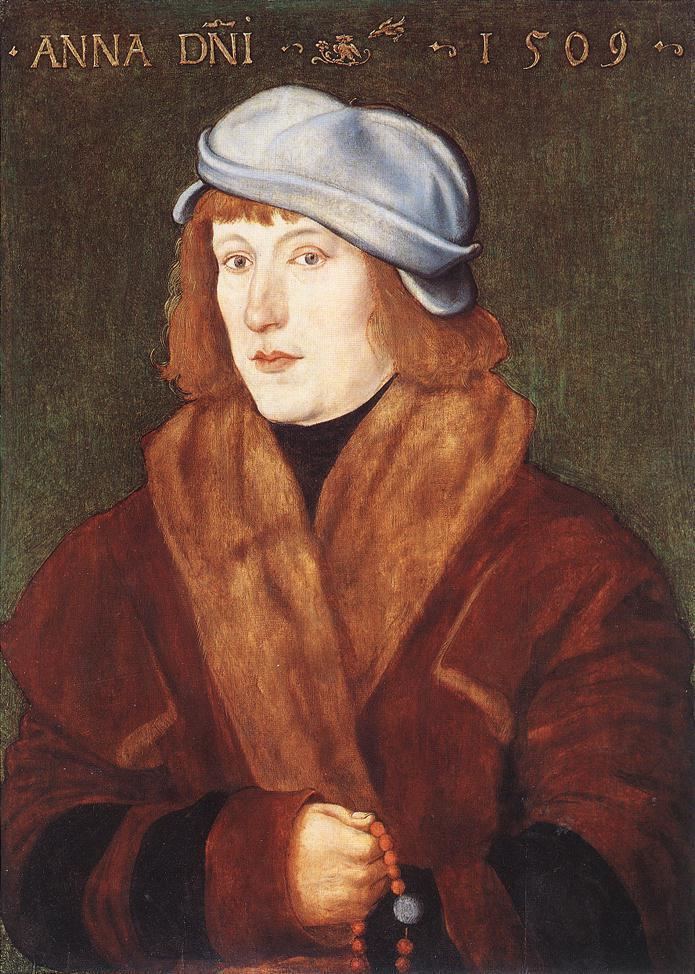 | ||
Full Name Hans Baldung Grien Born c. 1484 Free Imperial City of Schwabisch Gmund Artwork The Three Ages of Man and, Eve - the Serpent and Death, Durer's Rhinoceros, Knight - Death and the Devil, Melancholia I | ||
Arth 4007 hans baldung
Hans Baldung Grien or Grün (c. 1484 – September 1545) was a German artist in painting and printmaking who was considered the most gifted student of Albrecht Dürer. Throughout his lifetime, Baldung developed a distinctive style, full of color, expression and imagination. His talents were varied, and he produced a great and extensive variety of work including portraits, woodcuts, altarpieces, drawings, tapestries, allegories and mythological motifs.
Contents
- Arth 4007 hans baldung
- Hans baldung grien portrait of a woman
- Early life
- Life as a student of Drer
- Strasbourg
- Witchcraft and religious imagery
- Painting
- Selected works
- References
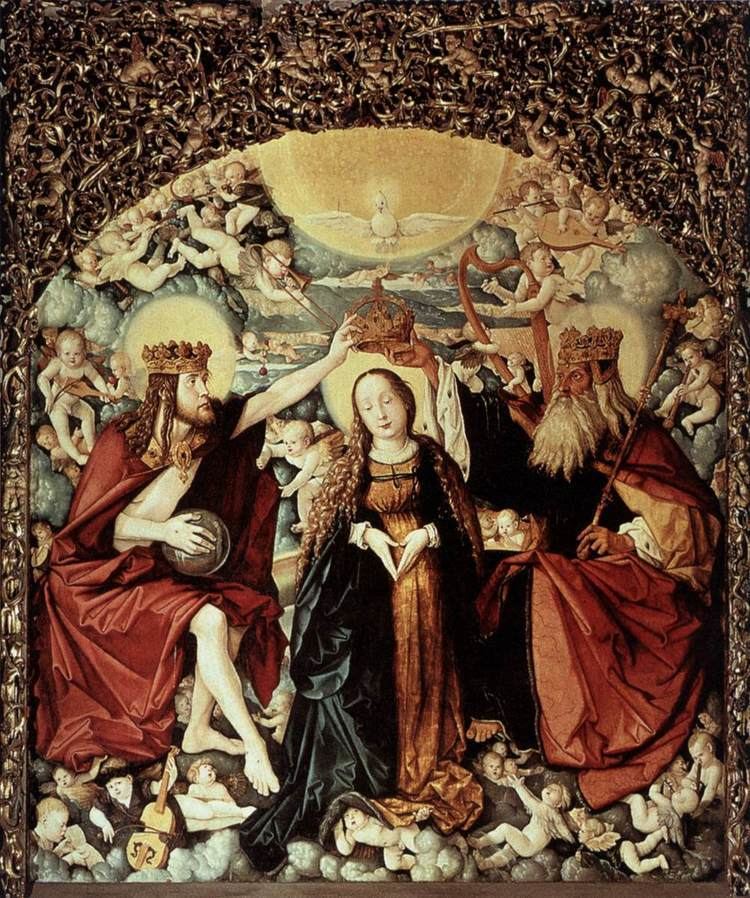
Hans baldung grien portrait of a woman
Early life
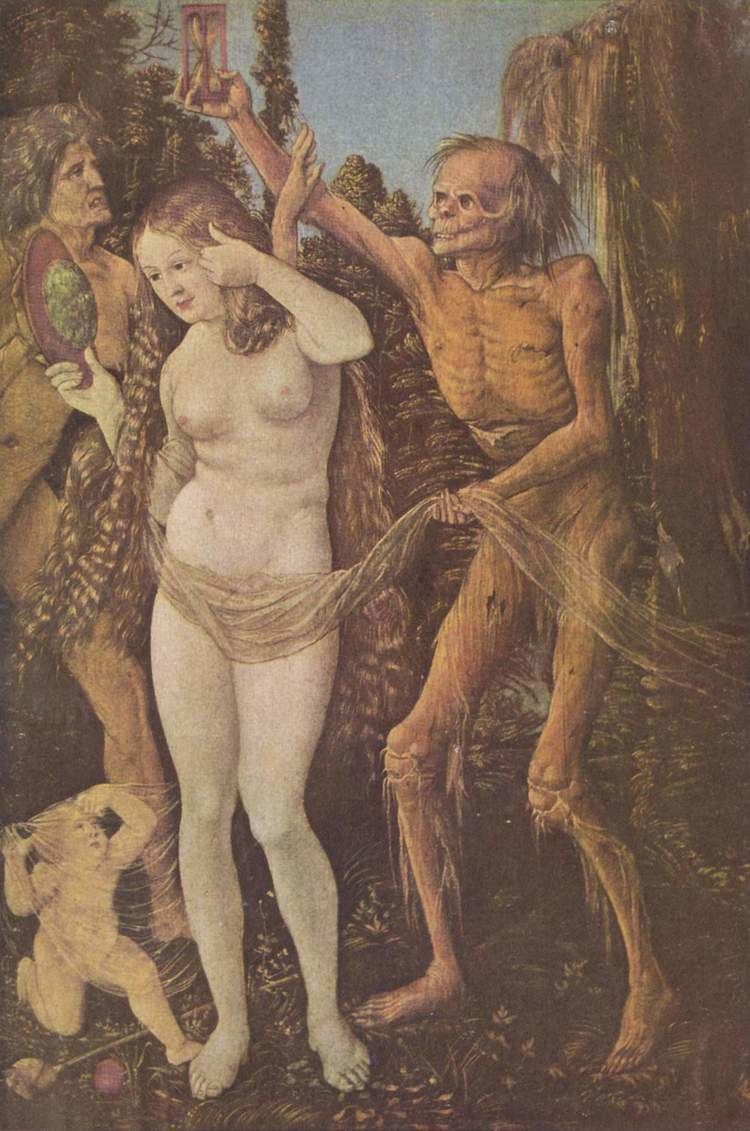
Hans Baldung was born in Swabia, Germany around the year 1484 to a family of intellectuals, academics and professionals. His father was a lawyer and his uncle was a doctor, and many other of his family members maintained professional degrees. In fact, Baldung was the first male in his family not to attend university, but was one of the first German artists to come from an academic family. His earliest training as an artist began around 1500 in the Upper Rhineland by an artist from Strasbourg.
Life as a student of Dürer
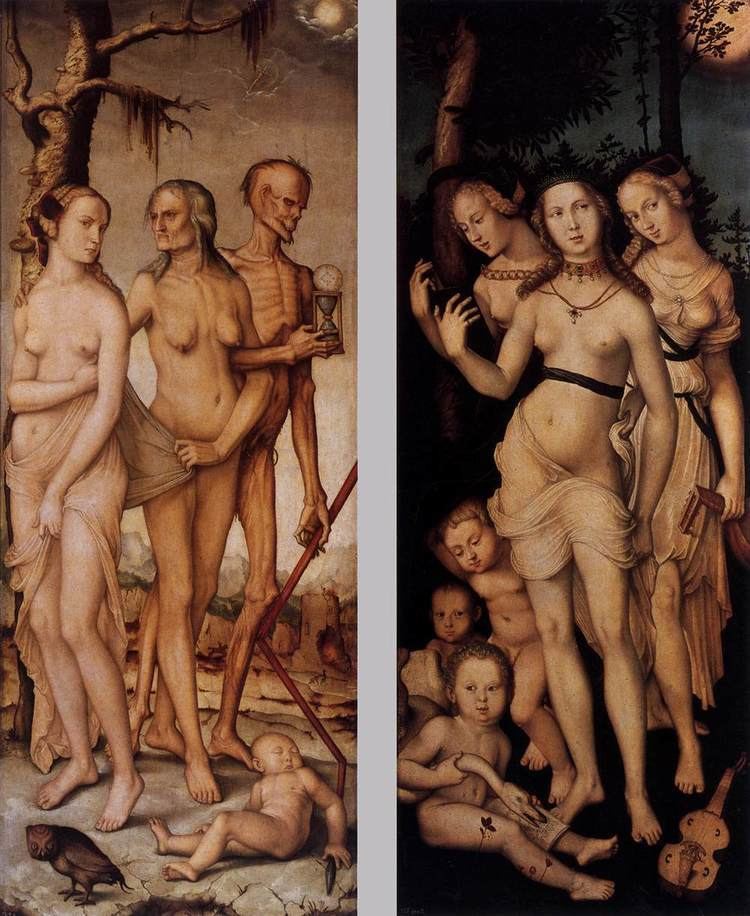
Beginning in 1503, Baldung was an apprentice for the most well renowned German artist of the day: Albrecht Dürer. Here, he may have been given his nickname “Grien.” This name is thought to have come foremost from a preference to the color green: he seems to have worn green clothing. He probably also got this nickname to distinguish him from at least two other Hans’ in Dürer's shop, Hans Schäufelein and Hans Suess von Kulmbach. He later included the name "Grien" in his monogram, and it has also been suggested that the name came from, or consciously echoed, "grienhals", a German word for witch—one of his signature themes. Hans quickly picked up Dürer's influence and style, and they became good friends: Baldung managed Dürer's workshop during the latter's second sojourn in Venice. In his later trip to the Netherlands in 1521 Dürer's diary shows that he took with him and sold prints by Baldung. On Dürer's death Baldung was sent a lock of his hair, which suggests a close friendship. Near the end of his apprenticeship, Grien oversaw the production of stained glass, woodcuts and engravings, and therefore developed an affinity for them.
Strasbourg
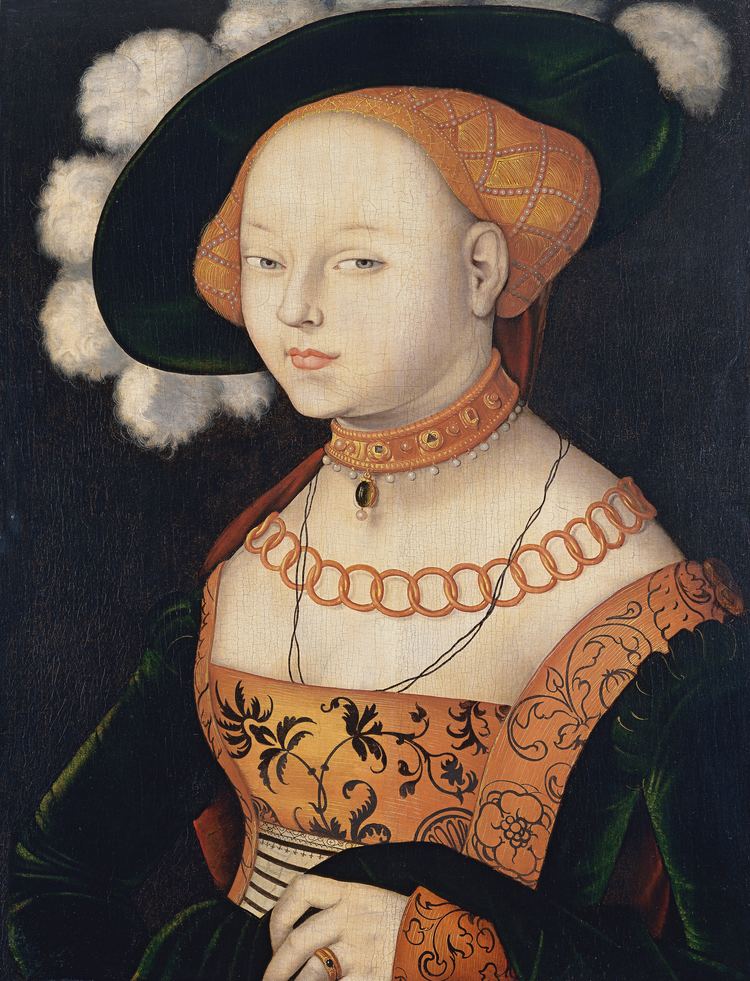
In 1509, when Baldung’s apprenticeship was complete, he moved back to Strasbourg and became a citizen there. He became a celebrity of the town, and received many important commissions. The following year he married Margarethe Herlin, a local merchant's daughter, joined the guild "zur Steltz", opened a workshop, and began signing his works with the HGB monogram that he used for the rest of his career. His style also became much more deliberately individual—a tendency some art historians have termed "mannerist."
Witchcraft and religious imagery

In addition to traditional religious subjects, Baldung was concerned during these years with the profane theme of the imminence of death and with scenes of sorcery and witchcraft. He helped introduce supernatural and erotic themes into German art, although these were already amply present in his master's work. Most famously, he depicted witches, also a local interest: Strasbourg's humanists studied witchcraft and its bishop was charged with finding and prosecuting witches. His most characteristic paintings are small in scale; a series of puzzling, often erotic allegories and mythological works. The number of Hans Baldung's religious works diminished with the Protestant Reformation, which generally repudiated church art as either wasteful or idolatrous. But earlier, around the same time that he produced Adam and Eve, the artist became interested in themes related to death, the supernatural, witchcraft, sorcery, and the relation between the sexes. Baldung’s fascination with witchcraft lasted to the end of his career.

Hans Baldung Grien's work depicting witches was produced in the first half of the 16th century, before witch hunting became a widespread cultural phenomenon in Europe. Thus Baldung's work did not represent cultural beliefs at the time of creation but largely individual choices. Furthermore, Baldung never worked directly with any Reformation leaders to spread religious ideals through his artwork, although living in fervently religious Strasbourg, although he was a supporter of the movement, working on the high altar in the city of Münster, Germany.
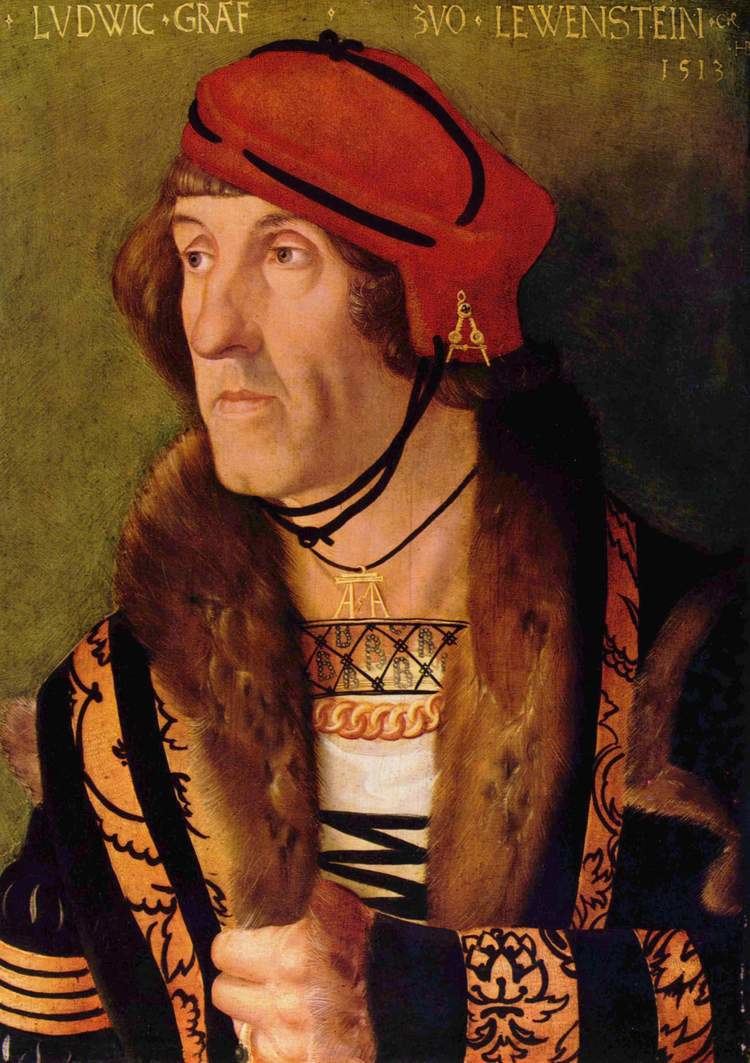
Baldung was the first artist to heavily incorporate witches and witchcraft into his artwork (his mentor Albrecht Dürer had sporadically included them but not as prominently as Baldung would). During his lifetime there were minimal witch trials, as well as a lack of witch manuals or witchhunts, therefore, some believe Baldung's depictions of witchcraft to be based on folklore rather than the cultural beliefs of his time. By contrast, throughout the early sixteenth century, humanism became very popular, and within this movement, Latin literature was valorized, particularly poetry and satire. Baldung partook in this culture, producing not only many works depicting Strasbourg humanists and scenes from ancient art and literature, but what some have described as his satirical take on his depiction of witches. Gert von der Osten comments on this aspect of "Baldung [treating] his witches humorously, an attitude that reflects the dominant viewpoint of the humanists in Strasbourg at this time who viewed witchcraft as 'lustig,' a matter that was more amusing than serious". Furthermore, his art simultaneously represents ideals presented in ancient Greek and Roman poetry, such as the pre-16th century notion that witches could control the weather, which Baldung is believed to have alluded to in his 1523 oil painting "Weather Witches", which showcases two attractive and naked witches in front of a stormy sky.
Baldung also regularly incorporated scenes of witches flying in his art, a characteristic that had been contested centuries before his artwork came into being. Flying was inherently attributed to witches by those who believed in the myth of the Sabbath (without their ability to fly, the myth fragmented), such as Baldung, which he depicted in works like "Witches Preparing for the Sabbath Flight" (1514).
Painting
Throughout his life, Baldung painted numerous portraits, known for their sharp characterizations. While Dürer rigorously details his models, Baldung's style differs by focusing more on the personality of the represented character, an abstract conception of the model's state of mind. Baldung settled eventually in Strasbourg and then to Freiburg im Breisgau, where he executed what is held to be his masterpiece. Here in painted an eleven-panel altarpiece for the Freiburg Cathedral, still intact today, depicting scenes from the life of the Virgin, including, The Annunciation, The Visitation, The Nativity, The Flight into Egypt, The Crucifixion, Four Saints and The Donators. These depictions were a large part of the artist’s greater body of work containing several renowned pieces of the Virgin.
The earliest pictures assigned to him by some are altar-pieces with the monogram H. B. interlaced, and the date of 1496, in the monastery chapel of Lichtenthal near Baden-Baden. Another early work is a portrait of the emperor Maximilian, drawn in 1501 on a leaf of a sketch-book now in the print-room at Karlsruhe. "The Martyrdom of St Sebastian and the Epiphany" (now Berlin, 1507), were painted for the market-church of Halle in Saxony.
Baldung's prints, though Düreresque, are very individual in style, and often in subject. They show little direct Italian influence. His paintings are less important than his prints. He worked mainly in woodcut, although he made six engravings, one very fine. He joined in the fashion for chiaroscuro woodcuts, adding a tone block to a woodcut of 1510. Most of his hundreds of woodcuts were commissioned for books, as was usual at the time; his "single-leaf" woodcuts (i.e. prints not for book illustration) are fewer than 100, though no two catalogues agree as to the exact number.
Unconventional as a draughtsman, his treatment of human form is often exaggerated and eccentric (hence his linkage, in the art historical literature, with European Mannerism), whilst his ornamental style—profuse, eclectic, and akin to the self-consciously "German" strain of contemporary limewood sculptors—is equally distinctive. Though Baldung has been commonly called the Correggio of the north, his compositions are a curious medley of glaring and heterogeneous colours, in which pure black is contrasted with pale yellow, dirty grey, impure red and glowing green. Flesh is a mere glaze under which the features are indicated by lines.
His works are notable for their individualistic departure from the Renaissance composure of his model, Dürer, for the wild and fantastic strength that some of them display, and for their remarkable themes. In the field of painting, his Eve, the Serpent and Death (National Gallery of Canada) shows his strengths well. There is special force in the "Death and the Maiden" panel of 1517 (Basel), in the "Weather Witches" (Frankfurt), in the monumental panels of "Adam" and "Eve" (Madrid), and in his many powerful portraits. Baldung's most sustained effort is the altarpiece of Freiburg, where the Coronation of the Virgin, and the Twelve Apostles, the Annunciation, Visitation, Nativity and Flight into Egypt, and the Crucifixion, with portraits of donors, are executed with some of that fanciful power that Martin Schongauer bequeathed to the Swabian school.
As a portrait painter he is well known. He drew Charles V, as well as Maximilian; and his bust of Margrave Philip in the Munich Gallery tells us that he was connected with the reigning family of Baden as early as 1514. At a later period he had sittings with Margrave Christopher of Baden, Ottilia his wife, and all their children, and the picture containing these portraits is still in the gallery at Karlsruhe. Like Dürer and Cranach, Baldung supported the Protestant Reformation. He was present at the diet of Augsburg in 1518, and one of his woodcuts represents Luther in quasi-saintly guise, under the protection of (or being inspired by) the Holy Spirit, which hovers over him in the shape of a dove.
